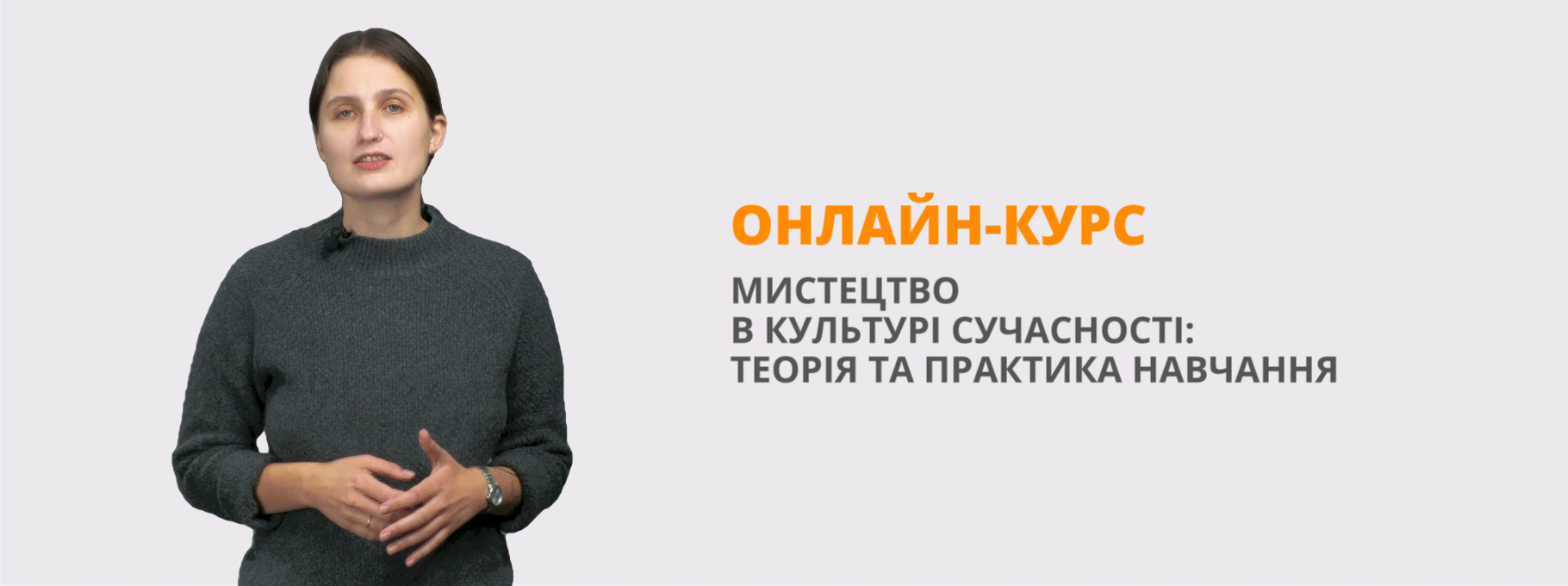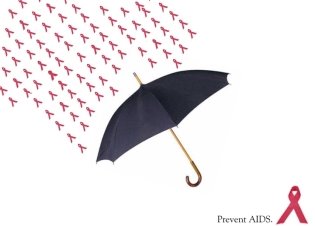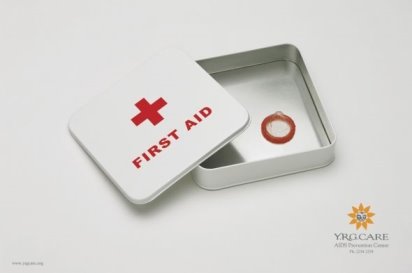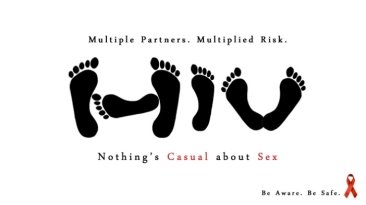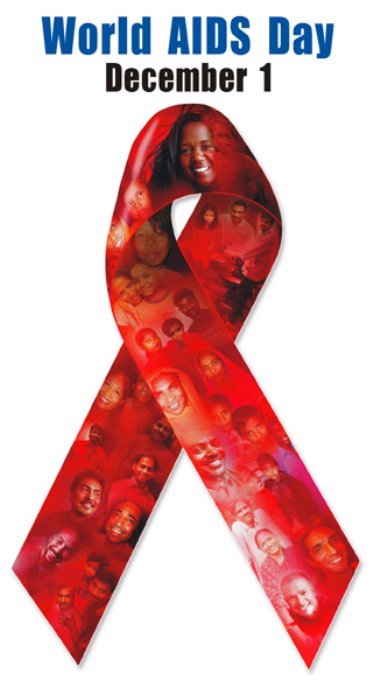Система занять-тренінгів на заняттях англомовного гуртка “Discovery” з профілактики ВІЛ/СНІДу
Three Statements about AIDS' and the AIDS Quiz. Both of these focus on the facts about HIV and AIDS.
Aims
To distinguish between facts and misinformation about HIV and AIDS.

на заняттях англомовного гуртка “Discovery”
з профілактики ВІЛ/СНІДу
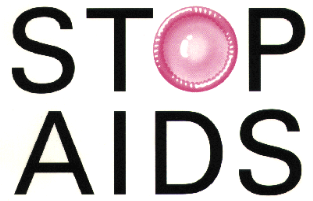
вчитель: Железковська О.Ю.
Олександрівська ЗШ І-ІІІ ст. №1
Three Statements about AIDS' and the AIDS Quiz. Both of these focus on the facts about HIV and AIDS.
Aims
To distinguish between facts and misinformation about HIV and AIDS.
What will you need
Chairs in a circle, small pieces of paper, pens and large sheets of paper.
Time: 30-45 minutes depending on the size of the group.
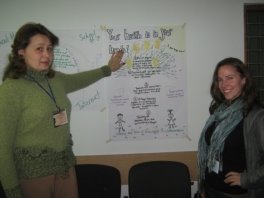 What you do
What you do
- Hand out 3 small pieces of paper to each group member and ask them to write on each one a statement they have heard about HIV or AIDS (this need not be something they agree with).
- Collect in the small pieces of paper and deal them out at random.
- Divide the group members into two roughly equal groups.
- Distribute a large sheet of paper to each group with headings 'AGREE', 'DISAGREE' and 'DON'T KNOW' on it. Ask group members to sort their small pieces of paper into each of these columns, reaching agreement on where each statement should be placed.
- When they have done this (about 20 minutes probably), both groups should be asked to justify their decisions to the main group as a whole. Group members must be prepared to say why they made the choices they did.
- Facilitate a discussion of the scientific, medical and social issues raised by the statements and where they are placed.
By having to defend the decisions made, the group will have a chance to begin to distinguish facts from prejudice and misinformation. Your own interventions will help consolidate understanding.
This AIDS quiz covers key basic information about HIV and AIDS. The quiz can be expanded with questions that are particularly relevant to the lesson and the young people being educated.
1. What is HIV?
- A virus
- A bacterium
- A fungus
2. What is the difference between HIV and AIDS?
- HIV is a virus and AIDS is a bacterial disease
- HIV is the virus that causes AIDS
- There is no difference between HIV and AIDS
3. Is there a cure for AIDS?
- Yes
- No
- Only available on prescription
4. Does HIV only affect gay people?
- Yes
- No
- Only gay men
- Only gay women
5. Can you get AIDS from sharing the cup of someone with HIV?
- Yes
- No
- Only if you don't wash the cup
6. Can insects transmit HIV?
- yes
- No
- Only mosquitoes
- How can you tell if somebody has HIV or AIDS?
- Because of the way they act
- They look tired and ill
- There is no easy way to tell
8. What does HIV stand for?
- Human Immunodeficiency Virus
- Harmful Intravenous Vaccine
- Homosexual Injury Volition
9. What does STD stand for?
- Sexually Transmitted Disease
- Special Treatment Doctor
- Standard Transmission Deficiency
10. When was the term “AIDS” defined?
- 1977
- 1982
- 1987
11. Which practice puts you most at risk of becoming infected with HIV?
- Kissing
- Using the same toilet as an infected person
- Unprotected vaginal sex
- Anal sex with a condom
12. What is abstinence?
- To refrain from sex
- To only have sex with one partner
- To lose your virginity
Quiz Questions Answer Sheet
- HIV is a virus. Like all viruses, HIV cannot grow or reproduce on its own. In order to make new copies of itself it must infect the cells of a living organism.
- HIV is the virus that causes AIDS. A person diagnosed with HIV can live a healthy life, if they have access to antiretroviral treatment. A person living with HIV are said to have AIDS when they develop an AIDS defining illness. This usually occurs in people not taking antiretroviral treatment.
- There is no cure for AIDS. This means it is important to be aware of prevention methods such as safe sex in order to protect yourself.
- No. HIV can affect anyone from any part of the world.
- No. It is not possible to become infected with HIV from everyday casual contact such as sharing food, shaking hands or touching the same objects. You are only at risk from HIV if you are exposed to infected blood or bodily fluids, through certain transmission routes such as unprotected sex.
- No. Insects cannot transmit HIV. When taking blood from someone mosquitoes do not inject blood from any previous person. The only thing that a mosquito injects is saliva, which acts as a lubricant and enables it to feed more efficiently.
- There is no easy way to tell. There are no specific symptoms of HIV. The only way to know if a person is infected with HIV is by them taking an HIV test.
- Human Immunodeficiency Virus is the full term for HIV, which means that HIV weakens the body's immune system.
- Sexually Transmitted Disease. These can be passed on during sex. So it's always a good idea to use a condom and protect yourself.
- AIDS was first defined in the USA in September 1982. The term 'AIDS' was suggested at a meeting in Washington, D.C., in July.
- Unprotected vaginal sex. Unprotected sex carries a high risk for becoming infected with HIV, so using a condom correctly will protect you. You can't become infected with HIV through kissing or through everyday contact such as using the toilet.
- Abstinence means to refrain from sex. Abstinence is encouraged along with partner reduction and condom use as a way of preventing the spread of HIV.
Topic: Ten Differences
Aims
This exercise encourages individuals to think clearly about the effects of prejudice on other people's lives.
What you will need
Chairs in a circle.
Copies of the 'Build a Character Questionnaire' - allow for one between 4 or 5 people. Paper and pens for each group member.
Time: about 60 minutes, depending on the size of the group.
What you do
- Ask participants to divide into groups of 4 or 5. Hand out pens and one 'Build a Character Questionnaire' to each group.
- Ask groups to complete the questionnaire, thus building a character. Allow about 10 minutes for this.
- Ask the small groups to imagine that their character is infected with HIV and to list 10 ways in which life will be different for the character because of this. Allow 10-15 minutes for this.
- Reassemble the group as a whole and ask each individual to say briefly whether anything unexpected occurred to them and how they felt whilst doing this exercise.
Likely outcomes
This exercise sparks off lively discussion about prejudice. It can help identify any prejudiced beliefs which the group find it hard to let go of, and which require more thought and discussion.
Build a character questionnaire
- Name: ………………………………
- Age: ………………………………
- Male/Female (Circle)
- Who does ………………………….live with? (Parents, relations, other adults, other young people)
- Who are …………………………..friends? …………………………………………………………………………….
- Does …………………………… have a girl/boy friend? Yes/No (Circle).
- If yes what is their name?………………………………………
- Does ………………………………………… have a job? Yes/No (Circle)
- If so what is it doing? ……………………………………………..
- What does ……………………………………do during leisure time? (Sport, clubs, visit friends, listen to music, spend time with family) ………………………………………………………………………….
- What is ………………………,
- favourite music ……………………………………………,
- favourite food ……………………………………………,
- favourite TV programme ……………………………………….
Talking about Prejudice
Aims
To encourage thought and discussion about prejudice and stereotyping. To examine the scapegoating of different minority groups and negative reactions towards HIV and AIDS.
What you will need
Large sheets of paper and pens.
Time: about 35-45 minutes, depending on the size of the group.
What you do
- Ask the participants to divide into groups of four or five and give each group a large piece of paper and some pens.
- Each group should then be asked to write a word in the centre of the paper. Half of the groups should write the word 'Prejudice' and the other half the word 'AIDS'.
- The groups are then asked to brainstorm as many words as they can which they associate with the title word. These words should be written in clusters around the title word.
- Bring the whole group back together. Those groups who were allocated the word 'AIDS' should go through the words they came up with during their brainstorm. These words should be written up clearly for all the participants to see. When this is completed, the process should be repeated for the word 'Prejudice'.
-
Encourage the participants to look for any similarities and draw parallels between the two lists. Useful questions to pose might include:
- What stereotypes do people associate with HIV and AIDS and prejudice against different groups?
- What media reporting do people find helpful and unhelpful?
- Which groups are most likely to experience prejudice?
- How are countries in other parts of the world portrayed in reports on HIV and AIDS?
- What role does prejudice play in talking about HIV and AIDS?
Likely Outcomes
 The participants may come up with words such as 'stereotypes', 'media', and 'racism'. With the facilitator's help participants will begin to draw parallels between some processes which underpin beliefs about HIV and AIDS, and prejudice.
The participants may come up with words such as 'stereotypes', 'media', and 'racism'. With the facilitator's help participants will begin to draw parallels between some processes which underpin beliefs about HIV and AIDS, and prejudice.
![]() This post also available in:
This post also available in:
|
|
· Ukraine : Nouvelle carte interactive en ligne pour combattre le VIH |
Ukraine has a high number of HIV infected people. To address this problem private Ukrainian Charity Elena Pinchuk ANTIAIDS foundation in partnership with the Ukrainian office of Google launched the news social service maps.antiaids.org on December 1, 2011, the World Aids Day. The new service will help Ukrainian Internet users easier and faster to find the sites of HIV testing in their region as well as condom vending machines.
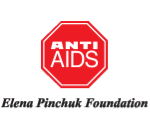 The web-site of ANTIAIDS foundation reported that in the framework of the project for the fist time in Ukraine a database 927 sites of HIV testing was created.
The web-site of ANTIAIDS foundation reported that in the framework of the project for the fist time in Ukraine a database 927 sites of HIV testing was created.
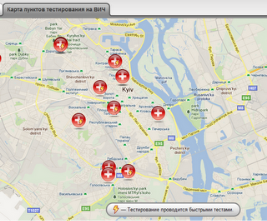 The interactive map shows not only the address of a particular site but also telephone numbers and the information about business hours. It also lists whether the site is unanimous or a person needs to present the ID. The database includes 173 sites of fast testing where a person can get the results in 15-20 minutes.
The interactive map shows not only the address of a particular site but also telephone numbers and the information about business hours. It also lists whether the site is unanimous or a person needs to present the ID. The database includes 173 sites of fast testing where a person can get the results in 15-20 minutes.
In addition, the HIV Testing Sites map service contains a FAQ section where a user can find all the information necessary for HIV testing such as how long to wait for a test results, is it possible to receive the results via e-mail or telephone, how much it will cots, what is the procedure of the testing and how to interpret the result, what to do if the results are positive or negative.
All this information is available not only in Internet but also on HIV/AIDS national hotline.
The condoms wending machines map helps people of major Ukrainian cities to find the nearest machine and to receive the instructions on how to use it. The advantages of the machines are speed and simplicity and that people can purchase the condoms anonymously, without attracting attention of other people and without and interaction with shop assistance like in supermarkets or pharmacies, ANTIAIDS web-site reported.
According to Google Ukraine blog the future plan of the project includes implementing improved navigation map and preparation of the mobile version of the service.
http://www.5min.com/Video/Dealing-with-HIV-AIDS-in-Ukraine---Part-12-458398230
http://www.5min.com/Video/Dealing-with-HIV-AIDS-in-Ukraine---Part-22-458398255
Topic: World AIDS Day is December 1st
Demonstration Lesson of the English circle “Discovery”
Type of the Lesson: combined
Objectives:
Practical: to teach students to read texts and practice vocabulary using dictionaries, to share, discuss and exchange opinions; to practise listening for specific information; to train four types of student's language skills; reading, writing, listening and speaking.
Educational: to mark World AIDS Day? December 1st; to enlarge students’ knowledge about AIDS;
Developing: to develop pupils’ skills in speaking, listening.
Upbringing: to teach students to respect one's rights and freedoms, to increase student's knowledge about HIV and what AIDS is.
Equipment: World map; question cards; question box, red ribbons, interractive board, handouts, a computer presentation, Internet.
Pre-session: Arrange students into groups of approx four or five. Hang world map at the front of the class. Write «HIV=BIЛ and AIDS=CHІД/СПИД» under map. Set red ribbons out on the table near the map for students to take after session.
Lesson structure
- Introduction to the Lesson.
- Greeting and Aim.
T: Held every year on 1st December World AIDS Day is a date for people to think about and act upon the global HIV epidemic. HIV continues to have a devasting impact on millions of people around the world. But this infection can be prevented. Although HIV can be treated, many people infected with HIV do not have access to live-saving drugs.
Watch a video and try to understand the problem.
http://www.youtube.com/watch?v=jaO14Ue9_zw&feature=relatedhttp://www./w?Started on 1st December 1988, World AIDS Day is about raising money, increasing awareness, fighting prejudice and improving education. World AIDS Day is important for reminding people that HIV has not gone away, and that there are many things still to be done.
According to UNAIDS estimates, there are now 34 million people living with HIV. During 2010 some 2.7 million people became newly infected with the virus, including an estimated 390,000 children. Despite a significant decline in the estimated number of AIDS-related deaths over the last five years, there were still an estimated 1.8 million AIDS-related deaths in 2010.
The vast majority of people with HIV and AIDS live in low- and middle-income countries. But HIV today is a threat to men, women and children on all continents around the world.
Get your Red Ribbons out: World AIDS Day is December 1st
- What is World AIDS Day?
T: December 1 is designated as World AIDS Day. Created in 1988, World AIDS Day is a day dedicated to increasing awareness, education and fighting prejudice. This day is important because it reminds everyone that HIV has not disappeared and there is a lot that can be done to fight the virus.
- Why is it important in Ukraine?
Ukraine has an HIV/AIDS epidemic. UNAIDS estimates the number of people infected with HIV/AIDS to be between 260 000 and 590 000. The cases of HIV have doubled every year for the past three years. Experts estimate that 1.4 percent of the adult population is HIV positive or has AIDS. This is the highest rate of infection in Eastern Europe and the CIS states. Unfortunately, it is also estimated that about 90 percent of these people don't know, and aren't registered with the government thus not receiving the treatment. Why would people try to hide their status even if it meant not being treated? Because here in Ukraine there is also a stigmatism associated with HIV and AIDS. A study done by AIDS Foundation East-West and the Ukrainian Network of People Living with HIV/AIDS found that more than 70 percent of Ukrainians felt that the HIV positive person is at least partly to blame for becoming infected (Kyiv Post, Aug. 11, 2005).
This stigmatism may arise for many reasons, but one is that there is a lack of education about the virus. Many people don't understand which ways HIV can be transmitted or that there is even an epidemic in this country. This is where PCVs can make a difference, especially on World AIDS Day.
Pre-reading task
- Т: How is HIV transmitted?
T: *Blood*Sexual Fluids*Breast Milk*
HIV is present in these bodily fluids of an infested person and can be passed on to another person by:
P1. Having unprotected sexual intercourse with someone who is infected.
P2. Sharing needles or body piercing equipment with«someone who is infected.
P3. Allowing infected fluids to get into a cut or sore anywhere on your body.
P4: Babies born to HIV positive women can be infected during pregnancy and birth or through breast feeding.
P5. HIV is present in the saliva of an infected person, but not in quantities sufficient enough to transmit infection. Once infection fluids have dried, the risk of them transmitting the virus is considered to be close to zero.
- T: Look at the posters on the whiteboard and listen to the record. How can HIV be transmitted?
http://kidshealth.org/parent/infections/std/hiv.html
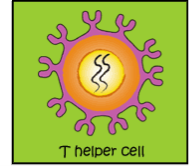 AIDS stands for acquired immunodeficiency syndrome, a disease that makes it difficult for the body to fight off infectious diseases. The human immunodeficiency virus known as HIV causes AIDS by infecting and damaging part of the body's defenses against infection — its lymphocytes, which are a type of white blood cell in the body's immune (infection-fighting) system that is supposed to fight off invading germs.
AIDS stands for acquired immunodeficiency syndrome, a disease that makes it difficult for the body to fight off infectious diseases. The human immunodeficiency virus known as HIV causes AIDS by infecting and damaging part of the body's defenses against infection — its lymphocytes, which are a type of white blood cell in the body's immune (infection-fighting) system that is supposed to fight off invading germs.
 HIV can be transmitted through direct contact with the blood or body fluid of someone who is infected with the virus. That contact usually comes from sharing needles or by having unprotected sex with an infected person. An infant could get HIV from a mother who is infected.
HIV can be transmitted through direct contact with the blood or body fluid of someone who is infected with the virus. That contact usually comes from sharing needles or by having unprotected sex with an infected person. An infant could get HIV from a mother who is infected.
HIV and AIDS can be treated, there are no vaccines or cures for them.
What HIV Does to the Body
The virus attacks specific lymphocytes called T helper cells (also known as T-cells), takes them over, and multiplies. This destroys more T-cells, which damages the body's ability to fight off invading germs and disease.
When the number of T-cells falls to a very low level, people with HIV become more susceptible to other infections and they may get certain types of cancer that a healthy body would normally be able to fight off. This weakened immunity (or immune deficiency) is known as AIDS and can result in severe life-threatening infections, some forms of cancer, and the deterioration of the nervous system.
Although AIDS is always the result of an HIV infection, not everyone with HIV has AIDS. In fact, adults who become infected with HIV may appear healthy for years before they get sick with AIDS.
-
T: What can PCVs do?
- Set up a table with posters, information and red ribbons. When people ask what you're doing, it's your chance to spread the knowledge.
- Hold a Day of Silence. Ask the people in your English Club to join you in remaining silent for the day in remembrance of the millions who have died of AIDS. Whenever anyone asks a question to a person participating in a day of silence, they can hand out a card that explains why he or she is silent today and maybe includes some fact(s) about HIV/AIDS.
- Organize an essay or poster contest among students.
- Arrange for a speaker to come to your school or organization. There are many organizations working throughout Ukraine, especially in Oblast Centers. They may be willing to come and speak to your students or you can ask a member of the HIV/AIDS Working Group or another PCV to co-facilitate a training or lesson.
- Prepare your debate team for the topic of HIV and debate away on December 1st.
- Be creative! Getting any information out is better than nothing. Knowledge is power!
For more information:
If you want to find out more about HIV/AIDS and find available lesson plans, visit the HIV/AIDS Working Group website at: http://hiv-aids.pcukraine.org/index.php. You can also visit the Resource Center and check out Sound Mind, Sound Body. There are also some excellent websites including: http://www.avert.org/worldaid.htm or http://www.aidsalliance.org. The AVERT website has some posters and booklets that can be downloaded from their educational section.
This activity is designed for students from 9th-11 forms and can also be used in colleges and pedagogical institutions and other groups of adult learners. Group size can vary. This activity should take approximately 45 minutes, depending on the length of the discussions and the English level of your students. It is meant to be modified by you for your different group(s).
PCVs have additional access to information on HIV/AIDS from the PC Resource Center in Kyiv, on-line (http://hiv-aids.pcukraine.org/) and from HIV/AIDS working group members. You are also encouraged to learn something new about HIV/AIDS to share with those around you on this year's World AIDS Day.
Materials needed: World map; Question cards; Question Box; red ribbons
Pre-session: Arrange students into groups of approx four or five. Hang world map at the front of the class. Write "HIV=BIJ1 and AIDS=CHIfl/CriMfl" under map. Set red ribbons out on table near the map for students to take after session.
Warm-up: In groups, students should name as many places as they can where they have seen red ribbons. Which group can identify the most places? Then ask each group to think together about the meaning of the red ribbon and then share in a large group.
Presentation of new material: Share information about World AIDS Day and that your students are part of a world-wide movement of discussing and educating as many people as possible about this deadly virus (sickness).
'Groups should then each pick out one question from the box and discuss together as a small group. After approx. 2-3 minutes, groups read question aloud and share what they came up with. Other groups should then add what they may already know. If something is unclear or an answer can't be found, use this as a learning opportunity and ask where they may be able to find such an answer. Questions are taken from
www.pbs.org/newshour/extra/teachers/lessonplans/health/aids/questions.html
1. What is HIV and what is AIDS?
2. How can people get HIV? (How is/isn't this virus spread?)
3. How many people have HIV in the world?
4. What regions of the world have the highest rates of HIV infection? (use map!)
5. Can HIV be treated with medication?
6. Is there any discrimination or fear related to HIV and AIDS? http://www.avert.org/hiv-aids-stigma.htm
http://www.videojug.com/interview/hiv-and-job-discrimination
Application of new material: Final Question (first discuss in groups then together): How can we (you and I) prevent the spread of HIV and AIDS in the world? (We must teach others what we know and make them aware too!)
If students want to take a red ribbon, they must promise (written or verbal) that they will tell at least one other person about what they learned today and report back to PCV.
- T: Express your agreement or disagreement "True of False"
HIV can be transmitted in the following ways:
1. By eating food prepared by someone with HIV.
2. Sharing needles or body piercing equipment with someone who is infected.
3. Allowing infected fluids to get into a cut or sore anywhere on your body.
4. Through swimming pools.
5. Through contact with toilet seats.
6. Having unprotected sexual intercourse with someone who is infected.
7. By sharing cutlery (utensils = forks, knifes, spoons, etc.)
8. Being given a transfusion of infected blood.
9. Babies born to infected HIV positive women can be infected during pregnancy and birth or through breast feeding.
10. By kissing, touching or shaking hands.
11. Through insect and animal bites.
12. Through the air, or by coughing and sneezing.
Work in Groups
Groups think of as many arguments as possible to support their point of view.
At the end of the debate students vote for the point of view that has been most convincing.
HIV = Human Immunodeficiency Virus
HIV targets the immune system, the very system which would normally defend the body against infections. The virus attacks a particular type of white blood cells called CD4t cells. It hijacks the cell, inserts its own genes into the cell DNA and uses it to manufacture more virus particles. These go on to infect other cells. The CD4t host cells eventually die. although scientists don't know exactly how. The ability to fight diseases decreases as the number of CD4t cell drops until it reaches a critical point at which the patient is said to have
AIDS = Acquired Immune Deficiency Syndrome
Vocabulary-Work
- T: Match these expressions (or words) to the definitions
|
AIDS Inexorably |
lowering the number of people infected with the virus a serious disease caused by the HIN vims, which destroys the body's natural protection from illness |
|
Reducing its rates of infection |
continually, without the possibility of it being stopped
|
|
Vulnerable groups |
to give a lot of attention to |
|
Association |
a thin rubber covering that a man can wear on his penis to stop a woman from becoming pregnant, or to protect him and his partner against some diseases |
|
Prostitution |
connection |
|
Typically frequent |
very thin pieces of hollow metal used w?hen taking blood from the body or putting drugs in |
|
A condom |
usually go to |
|
Needles |
the act of supplying sex for money |
|
to target |
groups of people who are at higher risk of being affected |
- T: Now choose the correct phrase to complete the sentences. How can HIV be prevented?
* Practicing safe sex = always use a condom in a consistent and proper manner
* Abstinence is the best method to be 100% safe *Not sharing needles (drug users)
*Become aware of your environment. Even if you have had the same sexual partner for a long period of time, he or she may have cheated!
Your body is a temple! Guard it with your life!
Post-reading task
- Group work. ( Question Box )
Teacher organizes a debate on the topic:
«Myths of HIV
HIV cannot be caught»
- The students are regrouped.
- Possible answers.
Myths of HIV
HIV cannot be caught
- through the air or by coughing and sneezing;
- by kissing, touching or shaking hands;
- by sharing crockery or cutlery;
- through contact with toilet seats:
- through insect or animal bites;
- though swimming pools;
- by eating food prepared by someone with HIV:
Application of new material:
T: How can we (you and I) prevent the spread of HIV and AIDS in the world?
P: We must teach others what we know and make them aware too!
T: Pass out red ribbons. They are easy to make. You only need some red ribbon & a safety pin. The red ribbon is an international symbol of AIDS awareness.
Summarizing.
T: Our lesson is over. But what have you learnt today? What was the most interesting for you? What was the most difficult? What was the easiest?
|
|
|
|
|
|
|
|
|
|
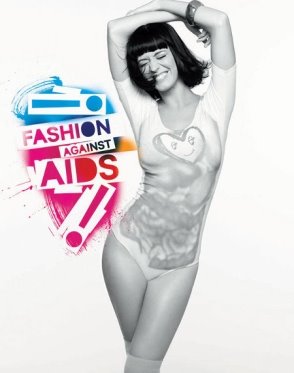
1


про публікацію авторської розробки
Додати розробку
